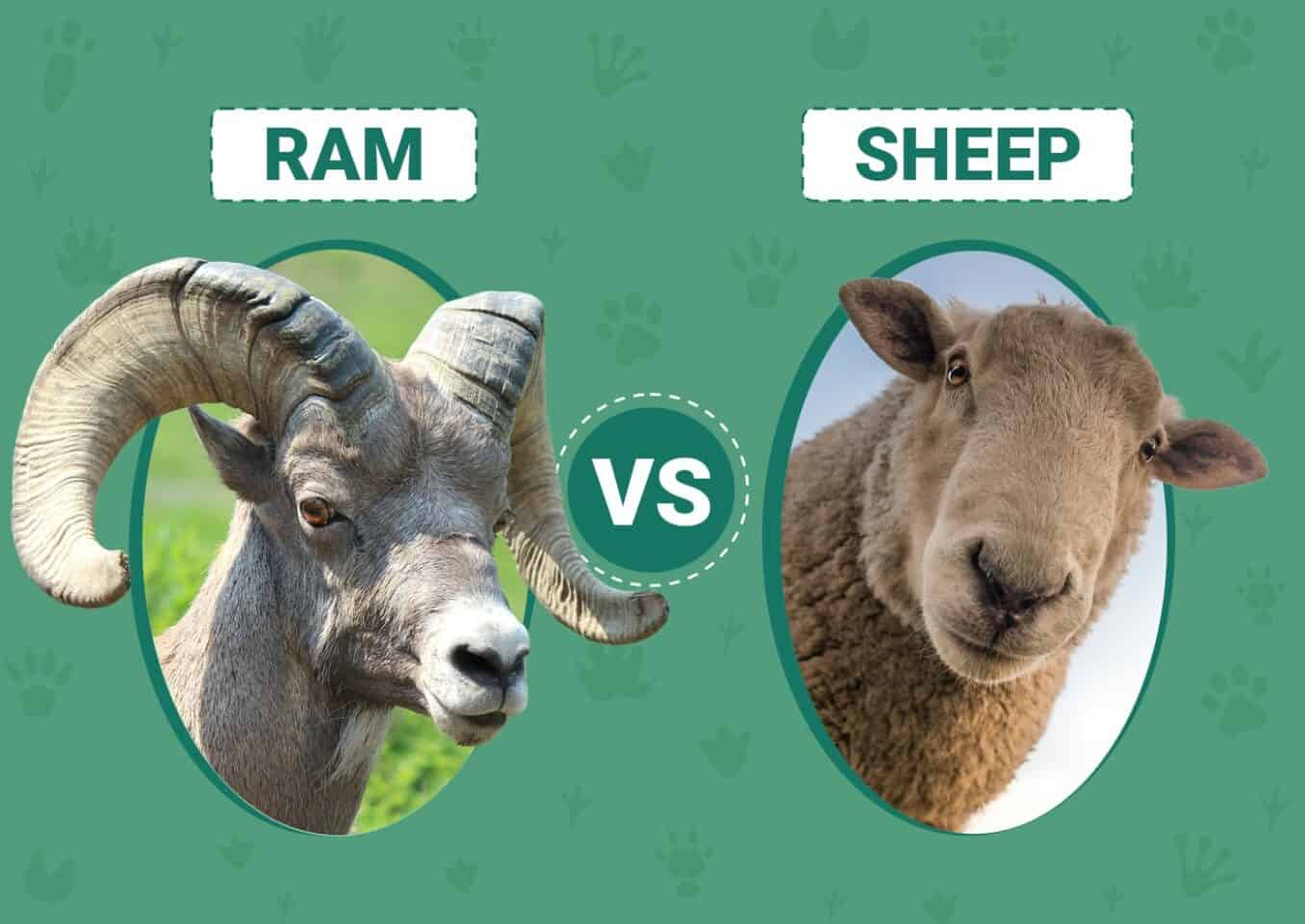Sheep are domesticated animals, usually bred for their fleece, meat, and milk. Hundreds of different breeds exist, and they are considered one of the most important of all farming animals, with an estimated one billion in existence today.
A ram is a male sheep, sometimes known as a buck, and a young ram is called a ram lamb. In some parts of the world, especially the UK, the ram is called a tup, which means that the mating season is called the tupping season. The ram is usually taller and heavier than the ewe, which is the name for a female sheep. Other names for sheep, dictated by the age or sex of the animal, include wethers, which are castrated males. There are also yearlings, which are sheep aged between 1–2 years old that have not given birth to young.
Sheep can be kept in a homestead for self-sufficiency. Some can be bred as pets and companions, but the typical use of the domesticated sheep is for large-scale farming.

Visual Differences
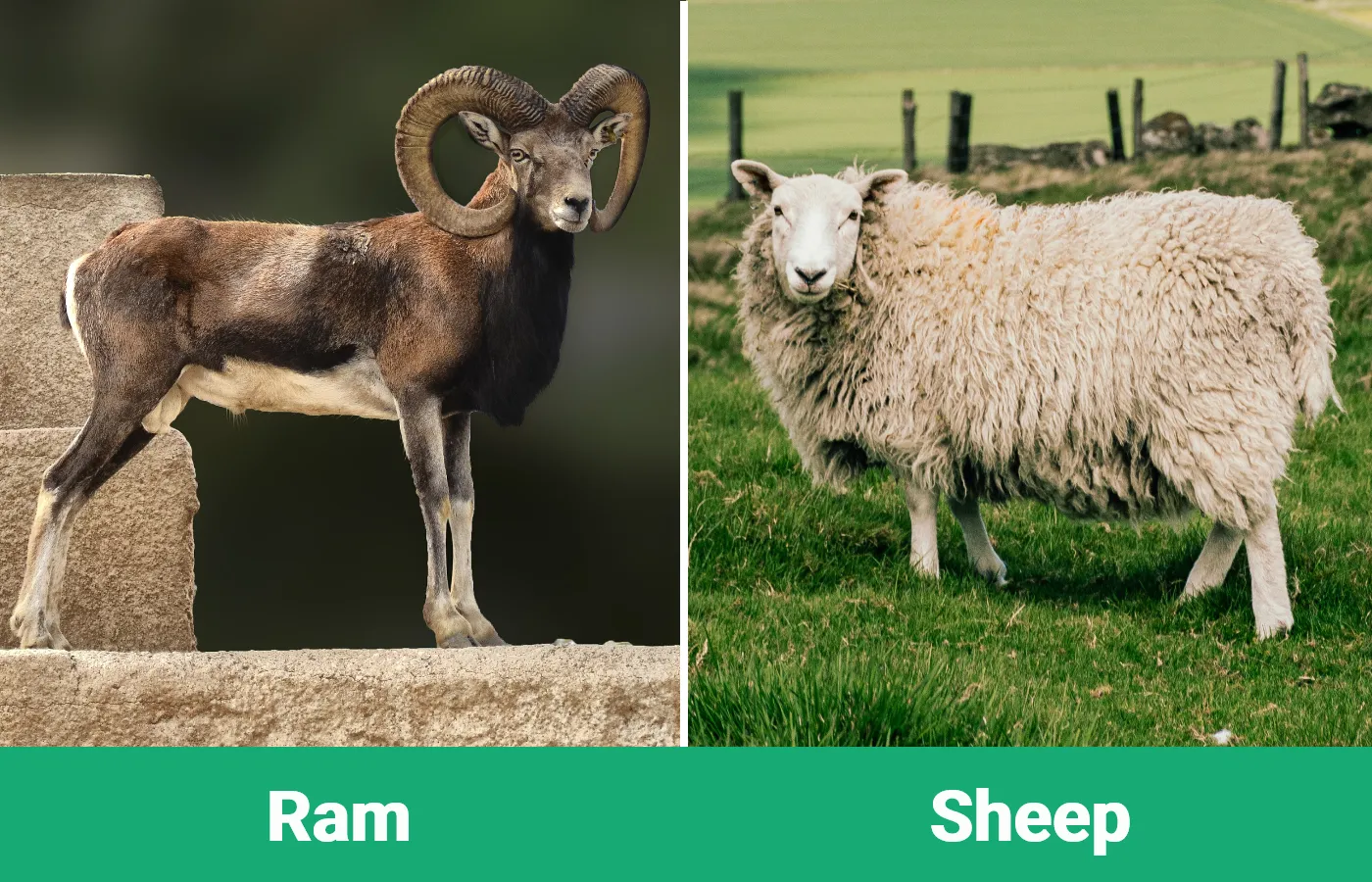
At a Glance
- Average length (adult): 45–55 inches
- Average weight (adult): 100–350 pounds
- Lifespan: 10–12 years
- Family-friendly: No
- Other pet-friendly: No
- Trainability: Intelligent with good memory and recognition
- Average length (adult): 45–52 inches
- Average weight (adult): 100–250 pounds
- Lifespan: 10–12 years
- Family-friendly: Potentially
- Other pet-friendly: Usually
- Trainability: Intelligent with good memory and recognition
Ram Overview
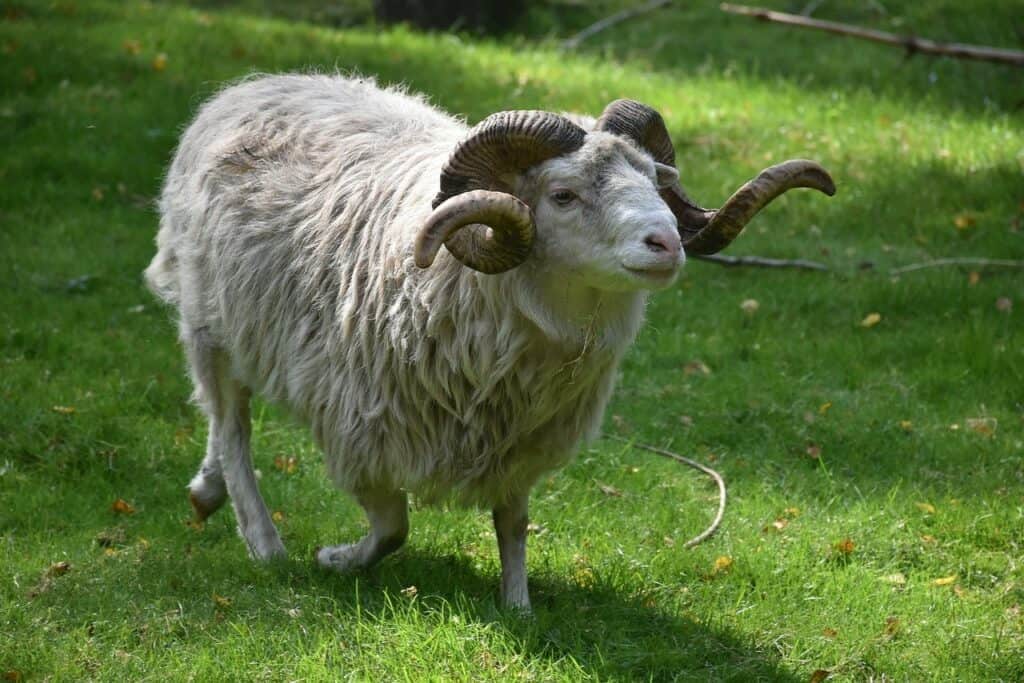
The ram is a male sheep, aged 12 months or over. A farmer requires both ewes and rams if they wish to breed lambs for the meat, or if they want to extract milk from the sheep. Rams may also be kept as stud rams, whereby their semen is sold to farmers and breeders or they are encouraged to impregnate ewes. Stud rams must be able to produce semen and those with a high production will earn more.
On average, a farmer will keep one ram for every 100 ewes in his flock, although this ratio can vary from 1:50 to 1:150.
Personality Character
Rams are known for being feisty. They can be aggressive, especially when it is mating season and they are around ewes that are in heat. They will fight with other rams for the right to mate, and if they feel threatened, a ram may turn on a person, dog, or any other animals or visitors to the farm. A ram may also turn on people or things that they view as a threat and/or see with their ewes. So, you should try and keep interaction with the ewes to a minimum.
This isn’t the case with all rams, but no matter how sweet and kind one of your stock of rams is, you should always be prepared for them to become aggressive.
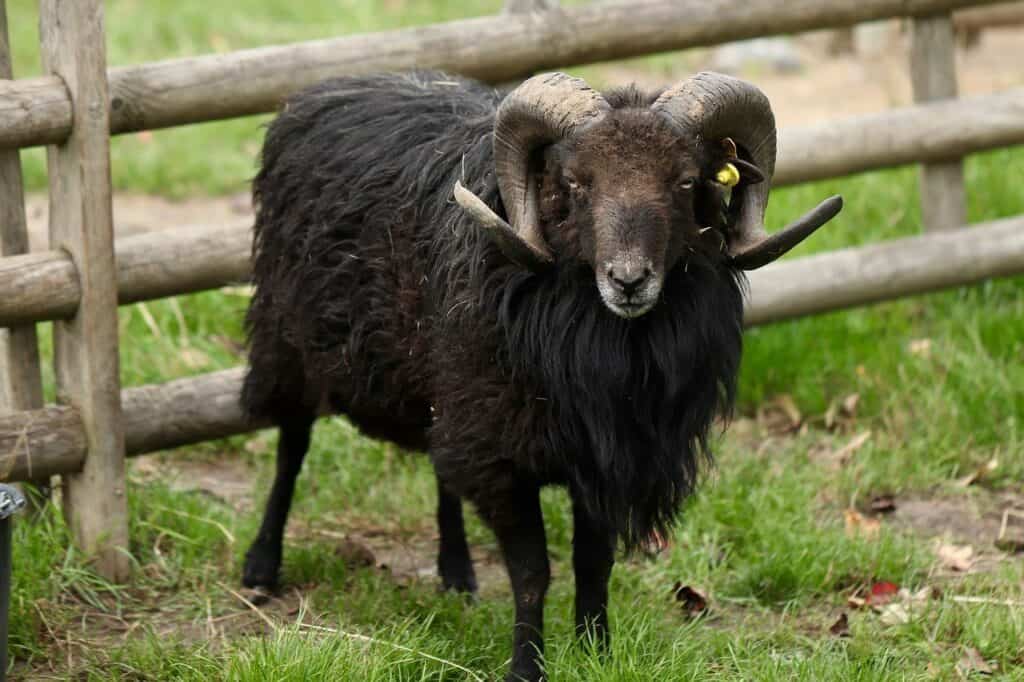
Training
As somewhat of a giveaway from the name, you should always expect some amount of ramming. The male sheep is known for this behavior, and it is natural. However, it can be a problem if your ram is butting and charging everything that enters the yard. It is difficult to train this behavior out of a ram because it is an instinct. However, you can set up the right conditions to minimize the risk. Ensure that you spend time around your ram, but you should avoid trying to turn him into a pet.
Fertility
Whether you want to breed to increase the size of your flock, sell lambs, or for any other purpose, you need a fertile ram. Those with larger testicles produce more sperm, so you can only increase fertility so much. The rest is genetics. Ensure that your rams have a good diet and be sure to provide them with a high energy diet before breeding season.
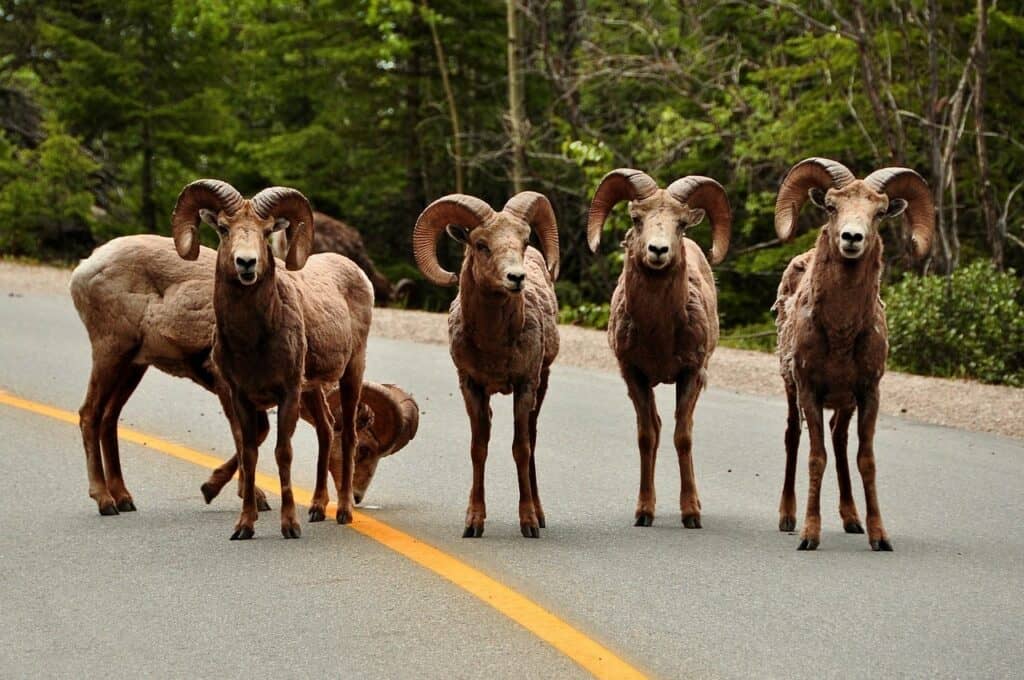
Can Two Rams Live Together?
Rams can live together, but it depends on the individuals in question. Some rams will live happily side by side, while others will constantly butt heads and ram one another in an ongoing bid for dominance. If you keep one ram, it is recommended that you keep another, but this usually takes the form of a castrated ram, called a wether. Because they have been castrated, they won’t fight for dominance or top dog position.
Suitable For:
Rams are suitable for any sheep owner or breeder that wants to breed their sheep. You will need one ram for every 30 to 150 ewes, depending on the libido, performance, and the age of the rams. Alternatively, rams can be kept for stud and offered out to local ewes.

Sheep Overview

A ram is a male sheep aged over 12 months, whereas any sheep under the age of 12 months is called a lamb. Female sheep are called ewes, and these make up the majority of a flock, in most cases. There are approximately 1 billion sheep in the world today, and these are reared and bred for their coats, their meat, and their milk. Some sheep are also kept for showing and exhibitions, and these can cost a lot of money to buy and raise.
Personality/Character
Sheep are generally considered friendly and gentle animals. They are herd animals, which means that they will do better in a group rather than on their own. As such, they get along with other sheep and they can get along with, or at least tolerate, other species of animal.
When reared from a young age, and especially when bottle-fed, sheep can also form a close bond with their owner. They tend to be obedient and follow a master or leader, and they are surprisingly intelligent. They have good memory and recognition skills. They do form close bonds with other sheep and may even stick up for one another in a fight or confrontation.

Starting a Flock
Starting your own flock can mark a positive step towards self-sufficiency, and a large farm flock can turn a handsome profit. Sheep are flock animals, which means that they will do better in groups. Start with a flock of at least five sheep. You can combine your new flock with other animals, such as alpacas and goats, but they need the companionship of other sheep to really thrive.
A flock of five sheep will need approximately one acre of land, although this depends on factors like grass quality and parasite risks. If you introduce a ram to your flock, you will need a wether that will live with your main ram to keep him company.
Choose a Breed
There are hundreds of breeds and hybrids of sheep available. Some breeds do better in certain climates, but one of the main reasons to choose a particular breed is according to your requirements. Do you want to maintain your pastures, or are you looking to sell or use fleeces? Are you hoping to rapidly increase the size of your flock? You can also consider factors such as whether a particular breed is good with children or does well living in cold conditions.

Caring for Your Flock
Once you have stocked your flock, you need to ensure that they are well cared for. This means ensuring that they have plenty of grass to graze on in the summer, and it will mean feeding them hay in the winter. Ewes get grain for 3 weeks after lambing to ensure that she has adequate nutrition during this stage.
Have the soil in your pastures checked. Many new farmers find that their soil and crops are lacking in selenium and you will need to supplement this to ensure that your flock and all of your sheep are healthy. Although sheep do not like to be closed in a barn, they do need some protection from the rain and wind in winter, and the sun in summer. A three-sided barn is the preferred method of protection in most cases.
Suitable For:
Sheep are good for new, existing, and experienced farmers. A starter flock usually consists of between five and 10 sheep. Any less than this and the sheep will not have enough companionship. You can combine ewes with a ram, although it is common to keep the ram and ewes apart, which means that you will need a second, castrated, ram, called a wether, to live with your main ram. A flock of sheep takes commitment and requires work every day, so you have to ensure that you’re committed to the idea before starting your flock.

Which Breed Is Right for You?
A sheep is a domesticated farm animal that is reared for its fleece and its meat, as well as its milk. You can also stud out the ram to make money.
A small flock of sheep, consisting of a dozen or so animals, may prove enough for you to live on, but it will take careful management, especially if you intend to keep a ram yourself, rather than use the services of a local stud ram. You will need some land, with an acre considered the absolute minimum for a small flock, and large flocks requiring hundreds of acres to graze and live on.
Choose sheep breed and numbers according to your purpose of owning them and whether you are rearing them for their fleece, their meat, or for showing and exhibitions.
Related Farm Reads:
Featured Image Credit: Top – Paxson Woelber, Unsplash | Bottom – Luke Stackpoole, Unsplash
